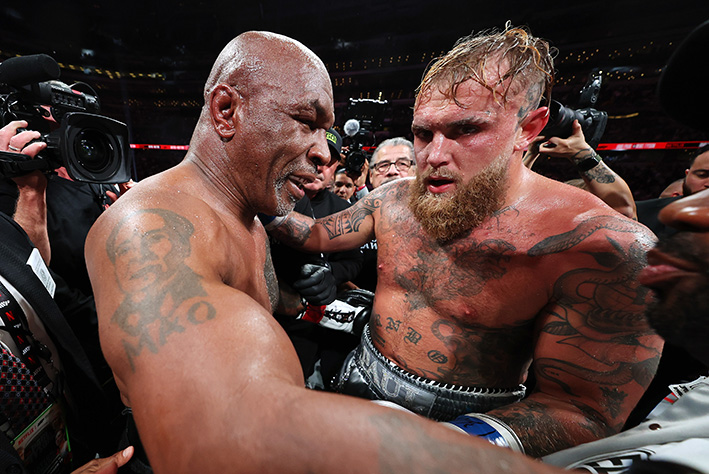2025 will be a turning point for CTV and multichannel campaigns

Opinion
Developments from Barb and IAB will all help the industry solve the challenges of fragmentation and standardisation in CTV as marketers recognise its strength within the digital landscape.
2024 brought UK households together around their screens for major cultural moments, from the Olympics, Paralympics and Euros to the general election. Streaming platforms played a key role, meeting audiences with record-breaking accessibility.
BBC Sport’s Olympics coverage saw 218m online streams — double the last tournament — while Channel 4 reached a third of the UK TV population with the Paralympics. More recently, Netflix debuted its first live event, drawing 60m viewers.
It’s no surprise that advertisers saw this opportunity and ran with it. Connected TV (CTV) has become the leading device for ad-supported content, accounting for 46% of all premium video ad views across Europe in the first half of 2024 — a 31% year-on-year increase. What’s more, 78% of marketers plan to significantly increase global adspend in addressable TV and CTV in 2025.
However, with great power comes great responsibility. While CTV remains one of the most integral marketing channels in terms of audience reach and targeting, there are still a number of gaps that need to be filled.
One example is fragmentation, with major streaming platforms setting their own ad parameters to campaign metrics and attribution. Plus, standardisation of ad formats is making it difficult for advertisers to know just what works best on each platform.
The good news is that the industry as a whole seems to be paying attention to these issues. In fact, it’s likely that 2025 may paint an even better picture for CTV.
Standardisation and measurement
Although CTV is an increasingly powerful tool within the advertising space, it isn’t without its obstacles.
Inconsistent measurement frameworks and a fragmented ecosystem remain two of the biggest hurdles for CTV advertisers. According to the Data & Marketing Association, nearly two-thirds of marketers say attribution challenges remain a major barrier, with TV ad measurement ranking low in effectiveness.
There’s also the complex issue of navigating varying ad specs, formats and a growing range of options like shoppable and interactive ads, leaving CTV media buyers unsure about efficiency and accurate campaign metrics.
We’ve seen industry players make efforts to address these issues. Barb recently announced that it will begin reporting co-viewing factors and a new Trustmark for audience measurement.
With co-viewing data, advertisers will have clearer insights into metrics like the average number of people in a household watching TV together across linear, VOD and streaming services. This new information, paired with the Trustmark, is a step in the right direction towards a unified standard for UK TV audience metrics.
At the same time, IAB Tech Lab’s Ad Format Idol initiative aims to address ecosystem fragmentation by standardising ad formats to enable a “build once, serve everywhere” approach.
There’s a very big likelihood that advancements like these will help advertisers make decisions faster — like knowing what format works best for what channel — but also support performance evaluation and effectiveness for advertisers.
Working together
While advancements that simplify measurement and standardisation will likely make a huge difference in the CTV landscape in the coming years, the full potential today lies in pairing the medium’s strengths with a broader multichannel strategy. By integrating CTV with other channels, advertisers can achieve wider reach, deeper engagement and sustainable growth across the media landscape.
The most recent Advertising Association/Warc report showed an increase in deployment of other key online formats, including online display, which grew to 21.6%, and digital OOH, which rose to 20.7%.
This goes to show that, while CTV is integral to the success of any digital marketing campaign, the industry’s increasing confidence in other digital-first channels and their role in shaping the future of advertising cannot be ignored.
However, it’s easy for marketers to throw ad budgets at any channel that shows value and hope they stick. The real test is ensuring informed decisions based on A/B testing and tailored metrics that actually work across multiple channels that drive growth.
The goal of any effective brand ad is to help guide consumers seamlessly through the conversion funnel, from awareness of the brand or product to making an informed purchase online or in store. Therefore, a multichannel strategy that allows advertisers to connect with audiences effectively, no matter where they are, is more important than ever.
The bigger picture
CTV is evolving fast and improvements in standardisation and measurement are making it easier for advertisers to navigate its challenges.
Barb’s co-viewing data and Trustmark are big steps towards clearer audience insights and more reliable metrics, while initiatives like IAB Tech Lab’s push to standardise ad formats are helping to streamline campaigns and improve results. These changes are setting the stage for a more unified and effective approach to CTV advertising.
That said, CTV works best as part of a bigger picture. By combining its strengths with other channels like digital OOH and online display, advertisers can reach more people and create stronger connections.
The key is to use the right tools and data to build campaigns that work seamlessly across channels — making sure every channel plays its part in driving real growth.
 Ed Mullins is director, inventory and partnerships, at StackAdapt
Ed Mullins is director, inventory and partnerships, at StackAdapt




